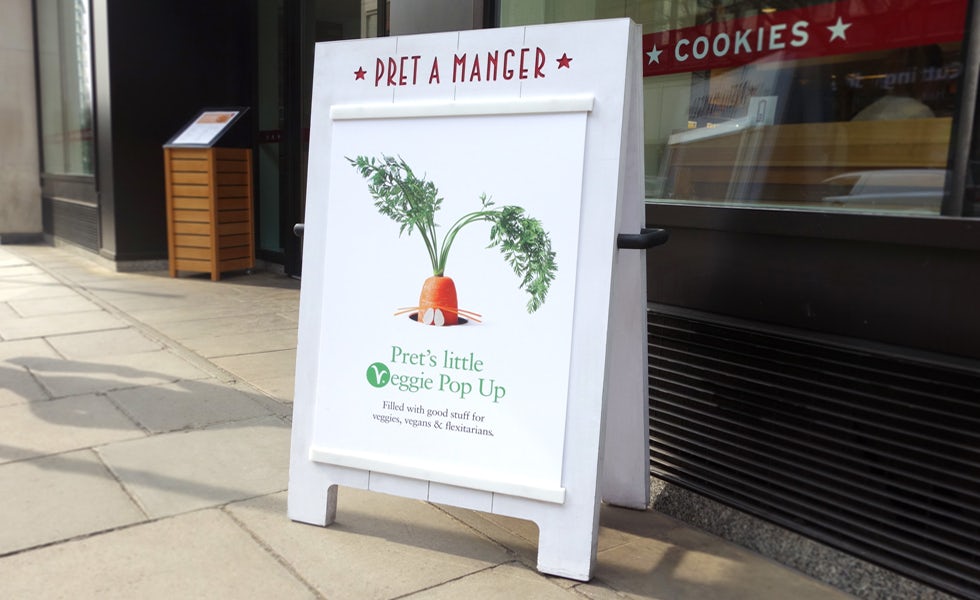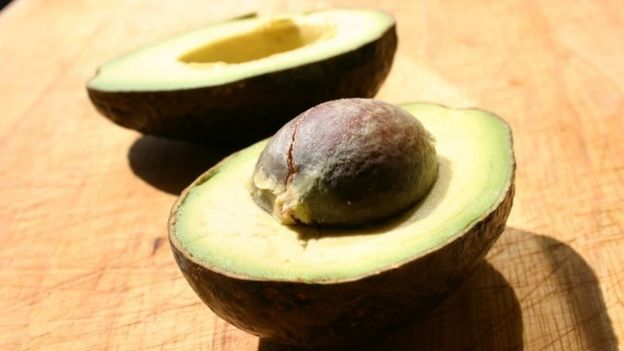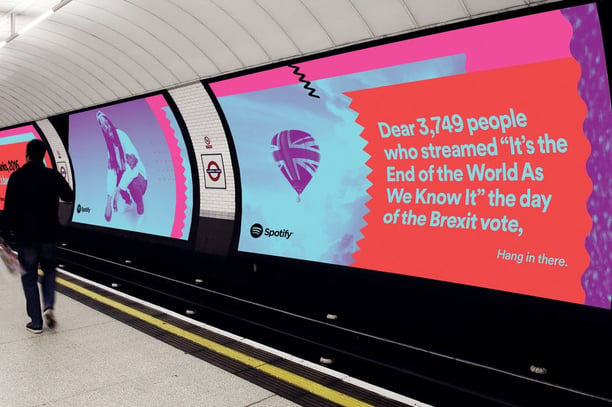This innovative Pret campaign that launched in April 2016 is notable not only for its originality, but for its refreshingly creative and low-budget approach to marketing.
Using the power of consumer insights to fuel their thinking, the inventive in-house creative team conducted research that revealed a shift in consumer attitudes towards healthier foods, having seen a double digit sales increase for healthy vegetarian options in 2015.
Basing its marketing around this insight, the team launched its first standalone vegetarian pop-up shop to give their clientele exactly what they were looking for.
Relying almost exclusively on in-store advertising and social media to expand their reach, the campaign proved the power that lies in listening and responding to your audience.
Pret’s sales of vegetarian food achieved a 13.9 per cent increase in sales to reach £676.2m last year, with the campaign leading to the rollout of more permanent sites. Group Marketing Director, Mark Palmer says:.
“If customers are good enough to give you their time, you need to listen.”
“Marketers find it hard to listen, they usually have their minds already made up. That is a mistake because if customers want to be part of your brand, you need to take them seriously.”

Pret A Manger's vegetarian products boost sales
 GETTY IMAGES
GETTY IMAGES
Coffee and food chain Pret A Manger says demand for its vegetarian products helped to lift sales last year.
Total group sales rose 13.9% to £676m in 2015, with like-for-like sales - which strip out the impact of new stores - up 7.5%.
Underlying earnings at the chain rose 14.4% to £84.2m.
Pret said it was continuing to adapt its menu to meet the demand for healthy options and it is planning to open a vegetarian "pop up" shop this summer.
In the UK, sales of vegetarian products showed double digit growth last year. Avocado was the ingredient that saw the biggest rise in demand.
Clive Schlee, chief executive of Pret A Manger, told the BBC: "Demand for vegetarian foods is growing faster than for meat, but meat remains an important part of the diet.
"We are encouraging vegetarianism because we want to give meat eaters more options. I think vegetarian foods could look better and be better."

The chain said coffee remained an important area of growth, with customers buying 1.5 million cups a week from its global network of shops.
It said it had seen an increase in demand for breakfast-on-the-go, with 58% of sales occurring outside lunchtime.
International appeal
The US was Pret's fastest growing market last year, achieving a 13.8% increase in like-for-like sales.
Pret opened 36 new shops last year - 23 were in the UK, six in the US, four in France and three in Hong Kong.
These included locations at major transport hubs such as Penn Station in New York, Nice Airport and Gare de Lyon station in Paris.
The company said it created 763 jobs worldwide, with 500 of them in the UK.
Clive Schlee said the chancellor's National Living Wage had meant a 5% increase in the company's wage bill, but he said they were committed to paying above their competitor's rates to keep their staff fully engaged in the business.















